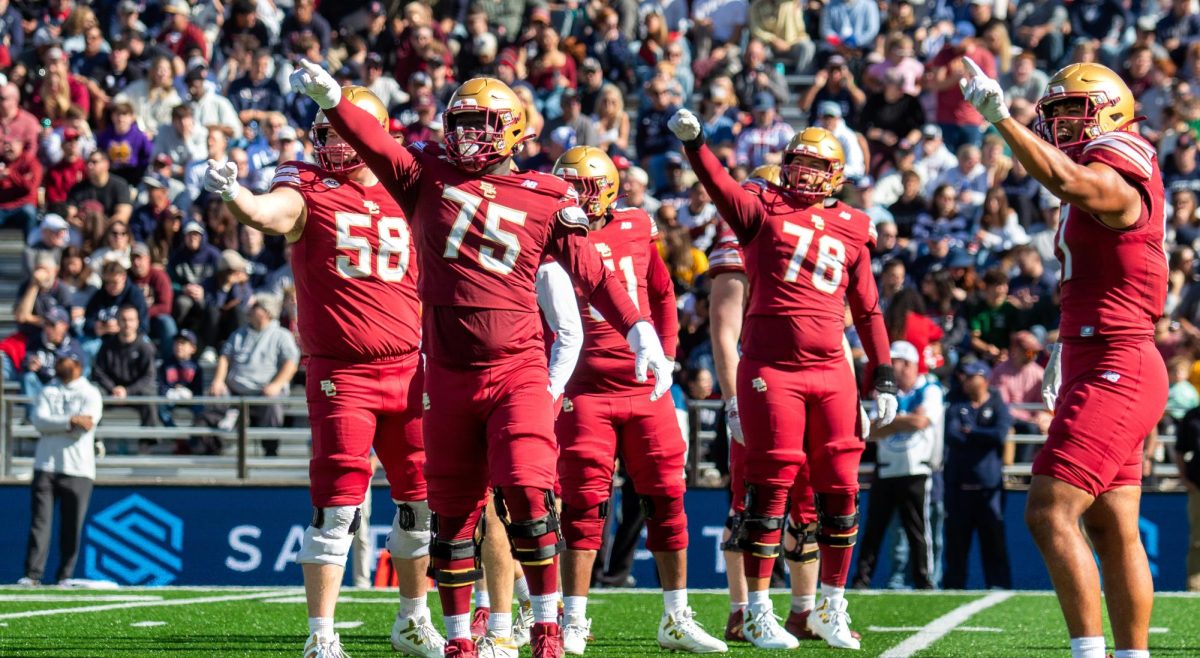The wind is blustering down my back on a drizzly night at the City Ground in Nottingham, England, and there’s no breath coming out of my mouth. As I walked down the tunnel, I look down the line of the squad I selected, only to see the trembling faces of a group of boys. Danny Wilson is frightened, Georginio Wijnaldum still doesn’t know how I found him at PSV Eindhoven, and Daniel Pacheco has a big grin on his face. It’s almost comforting that Martin Skrtel and Luis Suarez are out for blood. As my red tie chokes my neck, I step onto the grass, see the ghost of Brian Clough in the bench next to mine, and see 29,503 people—25,503 of whom want my tie to get just a bit tighter so I actually do choke.
It’s May 17, 2014. I’m two points behind Chelsea, level with Manchester United, but six points clear of Manchester City on the final day of the 38-match grind that is a season in the Barclays Premier League.
Somehow, I’ve survived two seasons as manager of Liverpool FC. Despite finishes in fourth, before one in third, I was never able to get the most out of Suarez, though I’m proud to say he never bit any defenders on my watch, and Steven Gerrard’s career began to plummet. He was not the box-to-box midfielder he once was, and I never got on with Jamie Carragher, because his Scouse accent was too thick, and he spoke way too fast. He retired before the 2014 season, which freed up Glen Johnson, Jose Enrique, Daniel Agger, and Skrtel to form a defensive unit that didn’t communicate with each other, but in some perverted way worked.
Against Nottingham Forest, we started in a 4-2-3-1, because that’s what sophisticated European soccer teams do against burley English teams stuck in a 1970s 4-4-2.
We needed a quick start to alleviate the pressure. Wijnaldum sliced through the defense and slid through Suarez for the goal. Three minutes gone, I loosen my tie a bit. It’s 1-0.
For the next half hour, we dominated possession, before earning a corner. Wijnaldum whipped it in, and my Slovakian hitman drilled it past the keeper to make it 2-0. All of a sudden, Suarez struck from 30 yards, and the Dutch wunderkind has added one of his own, and this sentence can’t end yet, because back-up left back Wilson has headed in a Gerrard free kick. The travelling Kop is in full song, and it’s 5-0 at the break. I find out Chelsea is level with Aston Villa at Stamford Bridge. We’re sitting pretty.
But Suarez comes into the break holding his shoulder and has red dripping from his hand.
“Boss, it’s bleeding,” he whined.
“What? No,” I said.
“Yes, the big boy over there, Collins. He’s bit me,” he spat back in broken English.
“But why?” I said, not surprised, because Danny Collins used to play for Stoke City.
“Well, boss, I may have…” said the big-toothed Uruguayan.
“What Luis?” I said, before realizing what he had done, “Oh, God. Tell me you didn’t try to…”
He smirked back at me.
The trainer cut off his sleeve and began to bandage his arm. We’re up 5-0, my star striker and leading goal scorer has been bitten, but we’re 45 minutes away from the league title.
I look down into the corner of the dressing room and see this cowardly Swiss striker, Oliver Friedrich, tapping his foot nervously on the floor. He couldn’t be more frail or cold.
“You’re going in,” I said to him. “You don’t really have to do anything. Just run. Oh, and if you get the ball, just shoot.”
He totalled 15 shots in the second half, and Gerrard kept looking at me with this stare, as if to say, “That’s my job.” After all, why find the teammate next to you when there’s a perfectly good post or corner flag 40 yards away to have a go at?
Friedrich scored after Pacheco grabbed a goal deep into the second half. Nottingham Forest was terrible. I took my iPhone out of my pocket and saw an update.
“FINAL: CHE 0-1 AVL, Benteke ’80.”
Thank God for the Belgian. We had won the league.
But I’m really just lying in bed on vacation in Bourne at my friend’s house at 1:00 a.m., and it’s July 2, 2012. What alternative universe was I in that summer night? That of Football Manager Handheld 2012.
Football Manager is a soccer management simulation game that was invented in 1994 in the United Kingdom. It’s not like FIFA, because you don’t control the actions of players during a match. You don’t tell players exactly when to shoot, or to whom to play the ball. All you can do is give them instructions and set them out in a formation.
The rest is up to the simulator. Throughout the match, you can make stylistic changes, wherein you exploit the middle of the pitch, play a higher line, and have players swap positions, or make a substitution.
Sound stupid? That’s because it is, though it’s extremely addictive. In 2012, the game was cited as the reason for divorce in 35 cases in the United Kingdom. It’s the reason that you stay up until 2 a.m. obsessing over tactics and don’t ask the cute girl in your Catholicism class out on a date—though it’s also the reason she’d say no anyway.
Since my run with the Reds, I’ve never had a better side. I was sacked at Liverpool on the game’s 2014 computer edition (Suarez, Gerrard, and Coutinho went down, so I’m still feeling hard done by John Henry and Tom Werner) and searched a year for a job, before finding Skrill Premier side Hereford (that’s the English sixth division, by the way).
I was sacked there, too, and somehow I got to work with the New England Revolution, where we won eight straight matches in the league and the U.S. Open Cup. While I got Diego Fagundez and Lee Nguyen to go off on opponents, I ran into issues with Gaston Fernandez’s work permit, which hamstrung my playoff run. I had a falling out with Charlie Davies, because he stopped showing up for training after I left him out of the squad for Patrick Mullins. Sorry, Charlie.
But there are other purposes for the game besides soccer geeks sitting around trying to live the dream. Since 2008, Everton has used the game for scouting purposes, and this summer, Prozone, a large soccer analytics firm used by Europe’s most elite soccer clubs, signed a deal with the game’s makers to use Football Manager’s database in a recruiting program it offers clients.
What separates FIFA and Football Manager is that the latter focuses on the micro parts of the player, as opposed to who they seem to be. For example, Cristiano Ronaldo might be a 92 in FIFA 2015, but if you use him the wrong way in Football Manager, you’ll get exposed defensively. FIFA is not always realistic, but Football Manager is.
The game also has an editor, which enables users to create their own players. There are about 36 attributes on which players are graded by a scale of zero to 20, with 20 being the best.
So, what if we made Boston College men’s soccer’s Zeiko Lewis and had him play for the Revolution, or stuck him into today’s Liverpool side next to Mario Balotelli and Daniel Sturridge for a season, or maybe, two, or three. Would he play? Would he score?
What if we made the whole BC men’s soccer team and ran them against European powerhouses of Bayern Munich, Barcelona, and Real Madrid? Could the diamond help the team scrape out results, or would a different shape benefit the personnel better?
Find out in two weeks.

Featured Image by Emily Fahey / Heights Editor


















